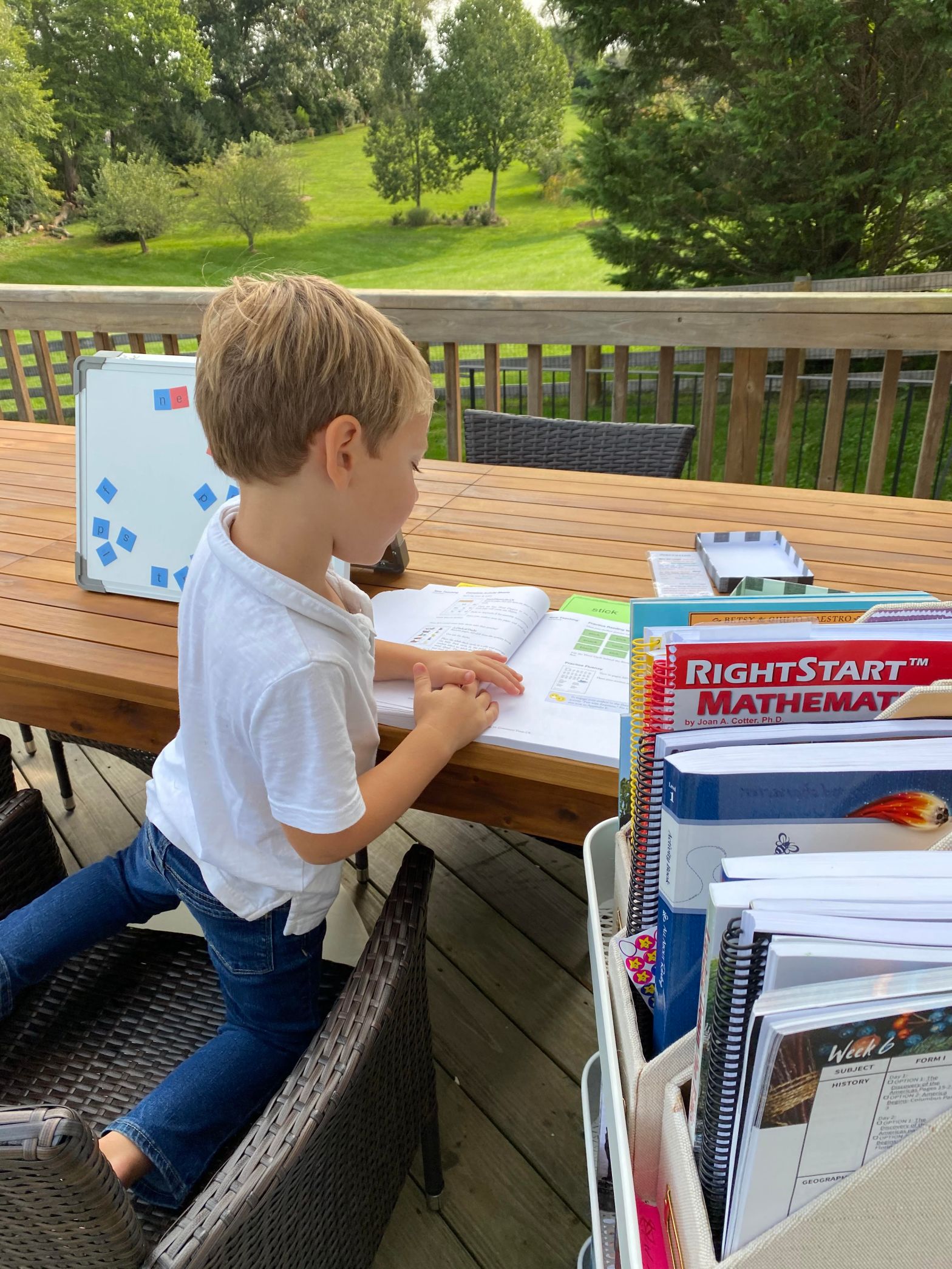If disgruntled by technical difficulties, concerned about extended screen time for your young child, or lack of flexibility has you reconsidering distance learning this fall, then you’re in good company. More than 10 million families plan to homeschool this year, 3 times more than the same time last year when approx. 3-4 million homeschoolers nationwide were registered at this point in 2019. I’ve seen many parents have an optimistic, “wait and see approach”in the hopes their districts will be able to smooth out some of the kinks in the first couple of weeks. Some issues can be fixed or worked through, while other problems may require a major change.
If you’re considering pulling out your child(ren), but are overwhelmed and anxious about how to transition from public school to homeschool, then I hope to calm your fears or remove any hesitations by providing information and resources. We recently started homeschooling and just went through the process. It is much easier than I had it built up in my head!! There were so many questions – where to start!?
Many parents jump ahead thinking that they need to choose a curriculum first. This immediately adds to the overwhelm. There are so many options and if you don’t know what you’re looking for then it will send your head into a spiral.
- First things first.The first thing you need to do is check the guidelines to homeschool in your state. The best place to find this information is at HSLDA.org (Home School Legal Defense Association). Many states have different (read: easier) requirements during the pandemic. HSLDA also has some great webinars available to new and crisis homeschoolers.
- In our case, we live in VA, we have to file an electronic Notice of Intent (NOI) with our school district. It’s a really simple form on their website. Once completed, I printed the page for my records. (Please note: you are notifying the school district, you are not asking for permission!) You can then begin homeschooling right away. You may notify your school, teachers ,etc. (and I’m sure they would appreciate the heads up), but it is not required. Also, check out the Home Educators Association website for your state. I’ve found HEAV.org (Home Educator’s Association of Virginia) Q&A section and blog posts to be tremendously helpful.
- Do your research. I know you’re thinking – “I don’t have time for that, we needed to start yesterday!” But take a little time to read more about and answer the following questions will save you a lot of time and headaches in the long run.
- What is my vision/goal? (It can be small or big – with COVID, it could just be to maintain 2nd grade standards or have a positive learning environment.) Write it down and revisit often.
- What are the various teaching methods/philosophies and how do I align with them? You can learn more here or here. You can even take a quiz to see which ones you identify with most.
- What is my child(ren)’s learning style? If your children are young like mine, you may not know their learning style yet. You can learn more about your child’s learning style here, and how that will play into your curriculum choices. Maybe you need a blended learning style option.
- Follow some blogs or social media accounts that follow the methods that interest you. You’ll usually notice if it is a good fit, see patterns in the materials and curricula used, etc.
- Don’t recreate the wheel. Reaching out to friends and acquaintances who homeschool or just started down this path IS immensely helpful. I was going to move this up in the list, but I think it’s important to do a little research on your own first so you know the questions you really need to ask and where to look for them. However, other homeschool moms can help you avoid common pitfalls or mistakes they made early on, they can help you navigate specific situations and offer insight that you just can’t find anywhere else. Don’t immediately buy the exact same curriculum without doing your own research, but these friends are your best resource for all kinds of info.
- Furthermore, join a couple of local homeschool Facebook groups. I’ve honestly found some to be more helpful than others. I tend to like groups that are more specific to my kids ages, teaching styles/methods, and our curriculum choices (very helpful when you do find one you like), rather than broad, really large homeschool groups. Most people provide some great ideas, and like any other area on social media they can also turn into a complaining session. However, be careful that this can also be a rabbit hole and you can start jumping ahead thinking you need to do #allthethings. Keep it simple in the beginning and slowly add more in IF you want.
- The Curriculum Conundrum. There is no best curriculum…there is only what you like and what is best for your family. In Teaching from Rest, Sarah Mackenzie of Read-Aloud Revival reiterates the importance of “curriculum as a tool. You’re teaching your child, not the curriculum.” A curriculum is not going to be perfect or check all of the boxes. Plus, the flexibility and beauty of homeschool is that you can pick and choose what parts/ sections you will do, and what you want to skip.
- If you plan to go back to public/private school in-person as soon as they open then you may want to take that into consideration. Most schools or districts have a breakdown of what units or lessons they cover in each grade and you can also use that as a guide in selecting curriculum if you find that helpful (not just the state standards or exams, but a longer form with more detailed info). For example: here is first grade in Fairfax County, VA.
- I have another post with a great graphic that breaks down curriculum options by method or teaching style. Look at some of their options and/or reviews by homeschool parents on Instagram or YouTube. If there are some you really like check out sample pages on their website, look at the scope and sequence, and/or take placement tests. Make sure it aligns with your homeschool vision, method, and child’s learning style. Look at Cathy Duffy reviews as you narrow down your options. Then pull the trigger and try not to over analyse it. Try something and if it doesn’t work, then you can always adjust later. If you want more info on choosing a curriculum, check out my more detailed post on it here.
- Socialization and finding community. Whether you’re interested in formal program or informal opportunities to connect with other kids and homeschool families, there are so many options! With the rise of homeschoolers and learning pods, you could also create your own or join a new group of other parents in similar situations, grades, schedules, etc. Some homeschool groups are built into your curriculum and they meet once a week as part of a community day to reinforce what you’re learning at home (for example: Classical Conversations). Others groups follow a similar philosophy/style and rotate hosting days or subjects based on their interests or expertise. There are large play groups with a more open come when you can policy, and some that are smaller in scope. Some groups like Wild + Free chapters that focus on nature and outdoor experiences. Other playgroups coordinate special field trips. I will be posting more on socialization soon.
- So where do you find these? We recently joined two play groups – our local Wild + Free chapter and a smaller playgroup with some newer friends I met in the area. I found the first by searching for Wild + Free as it aligned with my interest in Charlotte Mason, and we wanted to start exploring our area more since we moved here last year. The second group started organically as a couple of other moms mentioned they planned to homeschool this year too and we wanted to have an informal yet fun social outlet for our kids who are all around the same age. We looked into a popular co-op as well, but I was not ready to commit to a full day (especially if it may turn virtual anyway).
What other questions do you have about homeschooling? What are your concerns? If you currently homeschool, what would you add? There is so much to say about each of these sections, and I will try to dive into each area on its own.


One thought on “Transition from Virtual Learning to Homeschool this Fall”